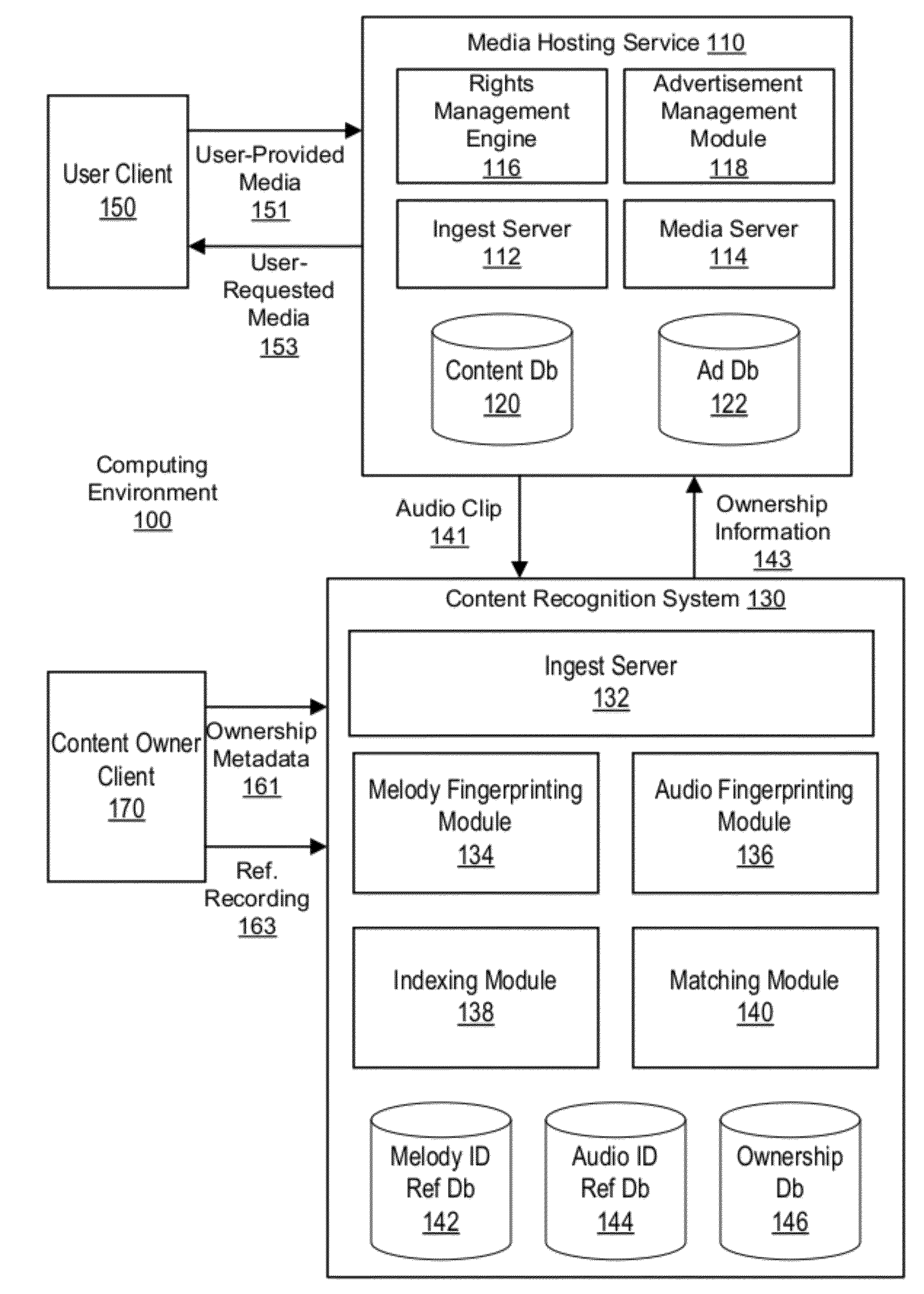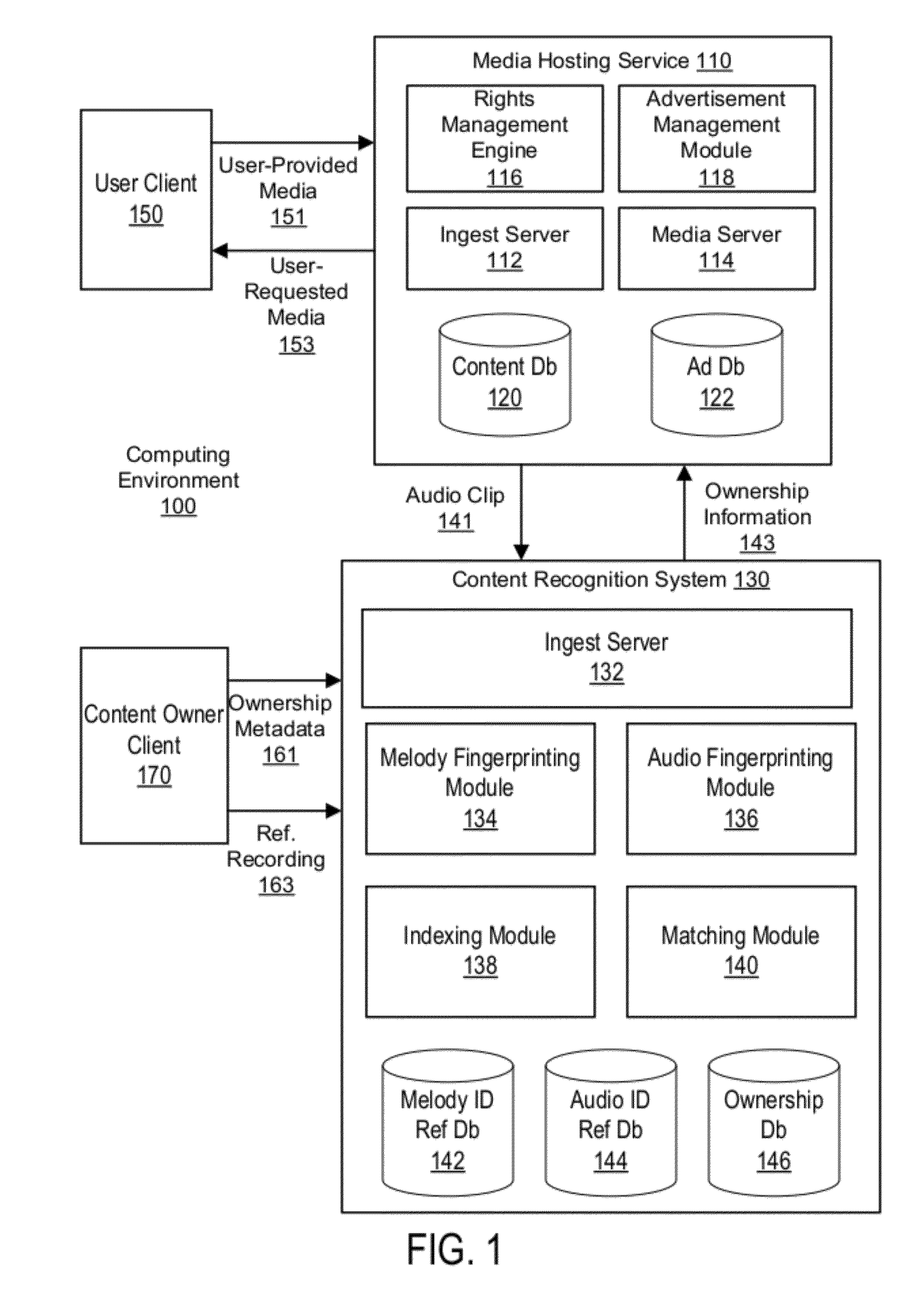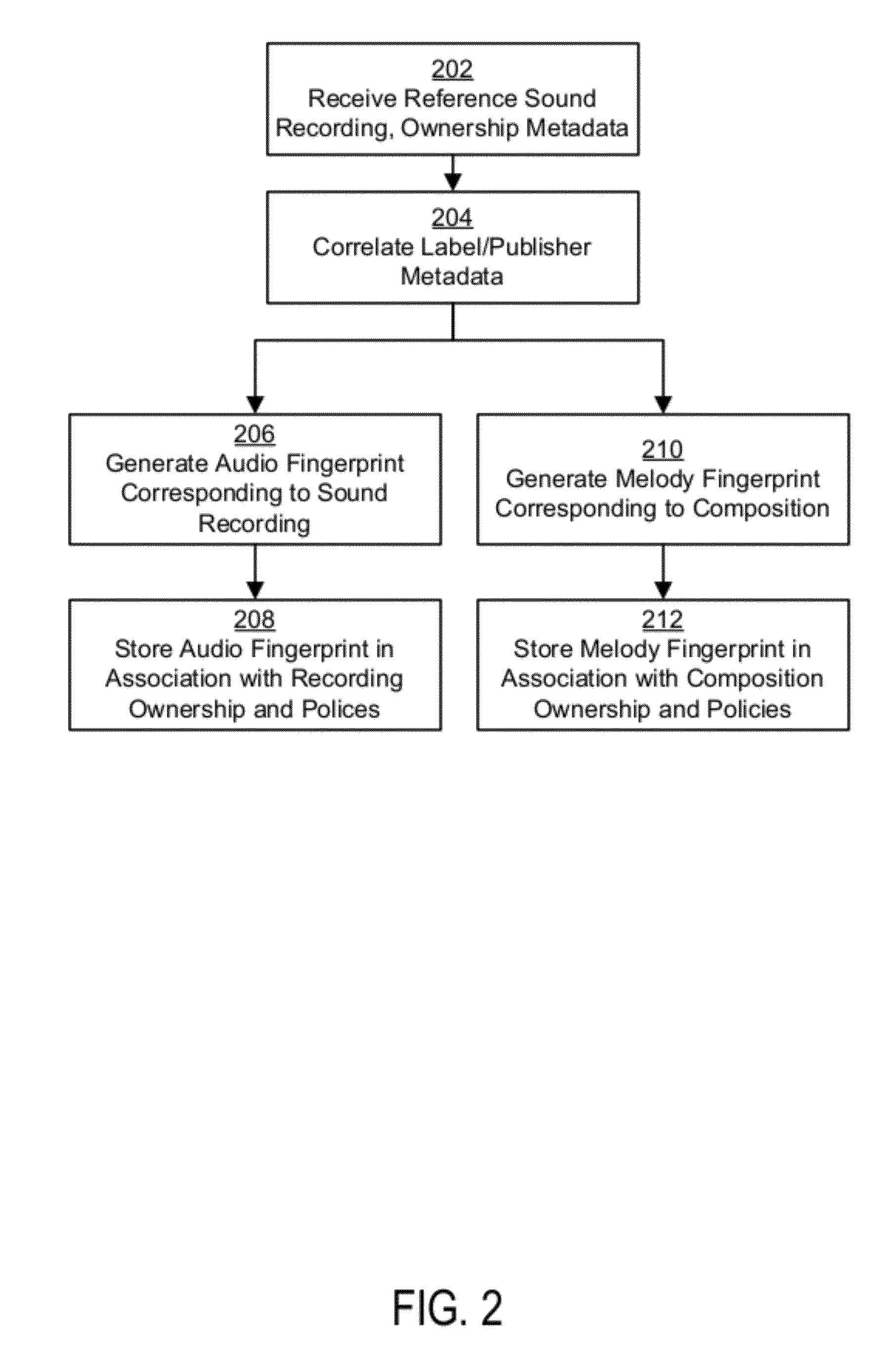Media rights management using melody identification
a technology of media rights and melody identification, applied in the field of media sharing, can solve the problems of increasing the difficulty of hosting services to manage the ownership rights of hosted media content, the inability to meet the robustness and scalability and the inability to meet the needs of modern media hosting services
- Summary
- Abstract
- Description
- Claims
- Application Information
AI Technical Summary
Benefits of technology
Problems solved by technology
Method used
Image
Examples
Embodiment Construction
Overview
[0024]A content recognition system automatically identifies sound recordings and compositions embedded in user-provided content (e.g., video and / or audio files) uploaded to a media hosting service. As used herein, a “sound recording” and a “composition” are each works that would be recognized as such under copyright law. By automatically identifying both sound recordings and compositions, the content recognition system is capable of detecting the use of both master recordings of a composition (e.g., a studio recording) released by a record label, and any other recordings of a composition, such as cover performances, newly released versions, alternative versions (e.g., acoustic versions) or live performance footage. Once media content is identified, a media hosting service can manage and monetize ownership rights on behalf of the content owners. Thus, for example, the media hosting service can automatically detect and block media content on behalf of the owners, or monetize t...
PUM
 Login to View More
Login to View More Abstract
Description
Claims
Application Information
 Login to View More
Login to View More - R&D
- Intellectual Property
- Life Sciences
- Materials
- Tech Scout
- Unparalleled Data Quality
- Higher Quality Content
- 60% Fewer Hallucinations
Browse by: Latest US Patents, China's latest patents, Technical Efficacy Thesaurus, Application Domain, Technology Topic, Popular Technical Reports.
© 2025 PatSnap. All rights reserved.Legal|Privacy policy|Modern Slavery Act Transparency Statement|Sitemap|About US| Contact US: help@patsnap.com



